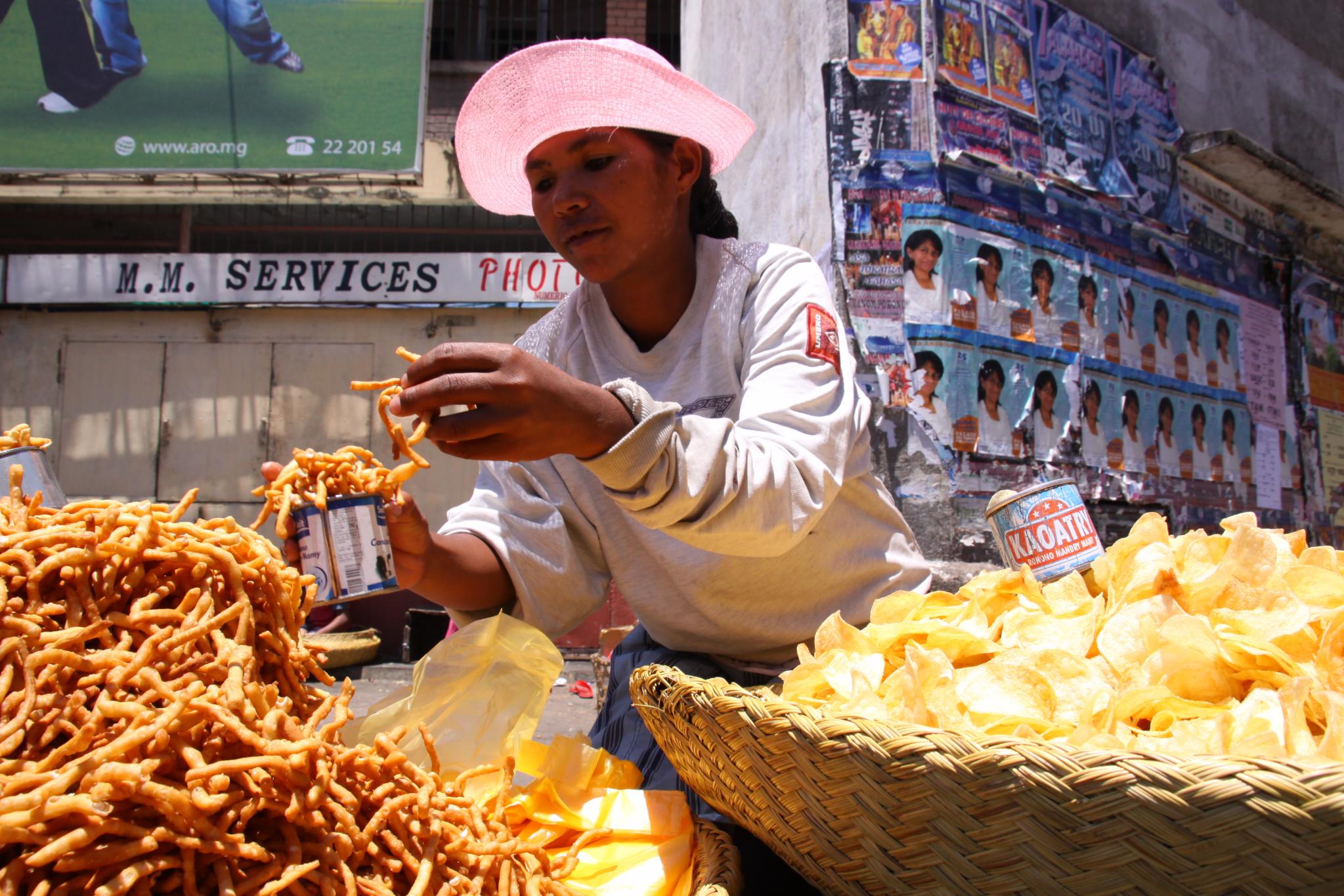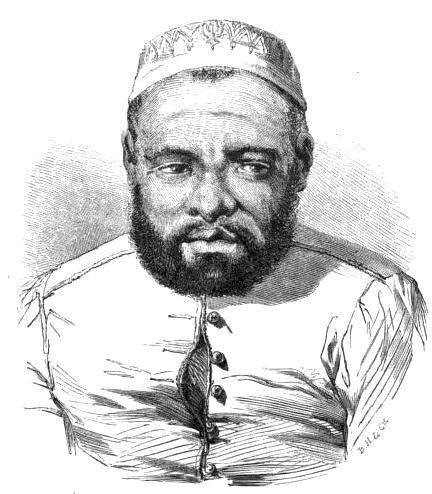|
Bezanozano
The Bezanozano are believed to be one of the earliest Malagasy ethnic groups to establish themselves in Madagascar, where they inhabit an inland area between the Betsimisaraka lowlands and the Merina highlands. They are associated with the ''vazimba'', the earliest inhabitants of Madagascar, and the many vazimba tombs throughout Bezanozano territory are sites of pilgrimage, ritual and sacrifice, although the Bezanozano believe the descendants among them of these most ancient of ancestors cannot be identified or known. Their name means "those of many small plaits" in reference to their traditional hairstyle, and like the Merina they practice the ''famadihana'' reburial ceremony. There were around 100,000 Bezanozano living in Madagascar in 2013. The slave trade and commerce with European trading vessels along the east coast of Madagascar in the 18th century greatly enriched the Bezanozano and led to the emergence of major trading towns such as Ambatondrazaka and Moramanga in thei ... [...More Info...] [...Related Items...] OR: [Wikipedia] [Google] [Baidu] |
Andrianampoinimerina
Andrianampoinimerina () (1745–1810) ruled the Kingdom of Imerina on Madagascar from 1787 until his death. His reign was marked by the reunification of Imerina following 77 years of civil war, and the subsequent expansion of his kingdom into neighboring territories, thereby initiating the unification of Madagascar under Merina rule. Andrianampoinimerina is a cultural hero and holds near mythic status among the Merina people, and is considered one of the greatest military and political leaders in the history of Madagascar. Andrianampoinimerina took power upon deposing his uncle, King Andrianjafy, who had ruled over Imerina Avaradrano (Northern Imerina). Prior to Andrianampoinimerina's reign, Imerina Avaradrano had been locked in conflict with the three other neighboring provinces of the former kingdom of Imerina that had last been unified under King Andriamasinavalona a century before. Andrianampoinimerina established his capital at the fortified town of Ambohimanga, a site of ... [...More Info...] [...Related Items...] OR: [Wikipedia] [Google] [Baidu] |
Andriana
Andriana refers to both the noble class and a title of nobility in Madagascar. Historically, many Malagasy ethnic groups lived in highly stratified caste-based social orders in which the ''andriana'' were the highest strata. They were above the Hova (free commoner castes) and Andevo (slaves). The Andriana and the Hova were a part of ''Fotsy'', while the Andevo were ''Mainty'' in local terminology. The Andriana strata originally constituted the nobility, warrior, and land owning class of the Merina society. They were endogamous and their privileges were institutionally preserved. While the term and concept of Andriana is studied with the Merina people of Madagascar, the term is not limited to them. The use of the word "Andriana" to denote nobility occurs among numerous other Malagasy ethnic groups such as the Betsileo, the Betsimisaraka, the Tsimihety, the Bezanozano, the Antambahoaka and the Antemoro. ''Andriana'' often traditionally formed part of the names of Malagasy kings ... [...More Info...] [...Related Items...] OR: [Wikipedia] [Google] [Baidu] |
Betsimisaraka People
The Betsimisaraka ("the many inseparables") are the second largest ethnic group in Madagascar after the Merina and make up approximately fifteen percent of the Malagasy people. They occupy a large stretch of the eastern coastal region of Madagascar, from Mananjary in the south to Antalaha in the north. The Betsimisaraka have a long history of extensive interaction with European seafarers and traders that produced a significant subset with mixed European-Malagasy origins, termed the ''zana-malata''. European influence is evident in the local ''valse'' (waltz) and ''basesa'' musical genres, which are typically performed on the accordion. ''Tromba'' (spirit possession) ceremonies feature strongly in Betsimisaraka culture. Through the late 17th century, the various clans of the eastern coastal region were governed by chieftains who typically ruled over one or two villages. A ''zana-malata'' named Ratsimilaho emerged to unite these clans under his rule in 1710. His reign lasted 50 yea ... [...More Info...] [...Related Items...] OR: [Wikipedia] [Google] [Baidu] |
Betsimisaraka Region
The Betsimisaraka ("the many inseparables") are the second largest ethnic group in Madagascar after the Merina and make up approximately fifteen percent of the Malagasy people. They occupy a large stretch of the eastern coastal region of Madagascar, from Mananjary in the south to Antalaha in the north. The Betsimisaraka have a long history of extensive interaction with European seafarers and traders that produced a significant subset with mixed European-Malagasy origins, termed the ''zana-malata''. European influence is evident in the local ''valse'' (waltz) and ''basesa'' musical genres, which are typically performed on the accordion. ''Tromba'' (spirit possession) ceremonies feature strongly in Betsimisaraka culture. Through the late 17th century, the various clans of the eastern coastal region were governed by chieftains who typically ruled over one or two villages. A ''zana-malata'' named Ratsimilaho emerged to unite these clans under his rule in 1710. His reign lasted 50 yea ... [...More Info...] [...Related Items...] OR: [Wikipedia] [Google] [Baidu] |
Imerina
The Merina Kingdom, or Kingdom of Madagascar, officially the Kingdom of Imerina (–1897), was a pre-colonial state off the coast of Southeast Africa that, by the 19th century, dominated most of what is now Madagascar. It spread outward from Imerina, the Central Highlands region primarily inhabited by the Merina ethnic group with a spiritual capital at Ambohimanga and a political capital west at Antananarivo, currently the seat of government for the modern state of Madagascar. The Merina kings and queens who ruled over greater Madagascar in the 19th century were the descendants of a long line of hereditary Merina royalty originating with Andriamanelo, who is traditionally credited with founding Imerina in 1540. In 1883, France invaded the Merina Kingdom to establish a protectorate. France invaded again in 1894 and conquered the kingdom, making it a French colony, in what became known as the Franco-Hova Wars. History Hova-Vazimba conflict Madagascar's central highlands we ... [...More Info...] [...Related Items...] OR: [Wikipedia] [Google] [Baidu] |
Kingdom Of Imerina
The Merina Kingdom, or Kingdom of Madagascar, officially the Kingdom of Imerina (–1897), was a pre-colonial state off the coast of Southeast Africa that, by the 19th century, dominated most of what is now Madagascar. It spread outward from Imerina, the Central Highlands region primarily inhabited by the Merina ethnic group with a spiritual capital at Ambohimanga and a political capital west at Antananarivo, currently the seat of government for the modern state of Madagascar. The Merina kings and queens who ruled over greater Madagascar in the 19th century were the descendants of a long line of hereditary Merina royalty originating with Andriamanelo, who is traditionally credited with founding Imerina in 1540. In 1883, France invaded the Merina Kingdom to establish a protectorate. France invaded again in 1894 and conquered the kingdom, making it a French colony, in what became known as the Franco-Hova Wars. History Hova-Vazimba conflict Madagascar's central highlands we ... [...More Info...] [...Related Items...] OR: [Wikipedia] [Google] [Baidu] |
Moramanga
Moramanga is a city (commune urbaine) in Madagascar. It is located in the region Alaotra-Mangoro and the Moramanga District. It has a population of 57084 inhabitants (2018). It is situated between the capital Antananarivo and the east coast on the crossroad of Route nationale 2 (Madagascar), RN 2 and Route nationale 44 (Madagascar), RN 44. The name of Moranmanga originates from the slave trade. To differ them from other social classes, they were dressed in blue or ''manga''. As they were among the cheapest (''mora'') in Africa, it became Moramanga. People Moramanga is also the capital city of the Bezanozano people (one of the eighteen Ethnic groups of Madagascar). Geography Moramanga is situated on a plateau between the central highlands and the east coast. Transports The national road Route nationale 2 (Madagascar), RN 2 connects the city with Antananarivo (115 km) and Toamasina (254 km), the Route nationale 44 (Madagascar), Route nationale 44 to Ambatondrazaka (157 km), ... [...More Info...] [...Related Items...] OR: [Wikipedia] [Google] [Baidu] |
Madagascar
Madagascar (; mg, Madagasikara, ), officially the Republic of Madagascar ( mg, Repoblikan'i Madagasikara, links=no, ; french: République de Madagascar), is an island country in the Indian Ocean, approximately off the coast of East Africa across the Mozambique Channel. At Madagascar is the world's List of island countries, second-largest island country, after Indonesia. The nation is home to around 30 million inhabitants and consists of the island of Geography of Madagascar, Madagascar (the List of islands by area, fourth-largest island in the world), along with numerous smaller peripheral islands. Following the prehistoric breakup of the supercontinent Gondwana, Madagascar split from the Indian subcontinent around 90 million years ago, allowing native plants and animals to evolve in relative isolation. Consequently, Madagascar is a biodiversity hotspot; over 90% of wildlife of Madagascar, its wildlife is endemic. Human settlement of Madagascar occurred during or befo ... [...More Info...] [...Related Items...] OR: [Wikipedia] [Google] [Baidu] |
Austronesian Peoples
The Austronesian peoples, sometimes referred to as Austronesian-speaking peoples, are a large group of peoples in Taiwan, Maritime Southeast Asia, Micronesia, coastal New Guinea, Island Melanesia, Polynesia, and Madagascar that speak Austronesian languages. They also include indigenous ethnic minorities in Vietnam, Cambodia, Myanmar, Thailand, Hainan, the Comoros, and the Torres Strait Islands. The nations and territories predominantly populated by Austronesian-speaking peoples are sometimes known collectively as Austronesia. Based on the current scientific consensus, they originated from a prehistoric seaborne migration, known as the Austronesian expansion, from pre- Han Taiwan, at around 1500 to 1000 BCE. Austronesians reached the northernmost Philippines, specifically the Batanes Islands, by around 2200 BCE. Austronesians used sails some time before 2000 BCE. In conjunction with their use of other maritime technologies (notably catamarans, outrigger boats, lashed ... [...More Info...] [...Related Items...] OR: [Wikipedia] [Google] [Baidu] |
Merina People
The Merina people (also known as the Imerina, Antimerina, or Hova) are the largest ethnic group in Madagascar.Merina people Ethnic Groups of Madagascar Encyclopædia Britannica They are the "highlander" Malagasy ethnic group of the African island and one of the country's eighteen official ethnic groups. Their origins are mixed, predominantly with |
Malagasy People
The Malagasy (french: Malgache) are an Austronesian-speaking African ethnic group native to the island country of Madagascar. Traditionally, the population have been divided by subgroups (tribes or ethnicities). Examples include "Highlander" (ethnically Austronesian/Malay-Indonesian with less Bantu ancestry) groups such as the Merina and Betsileo of the central highlands around Antananarivo, Alaotra ''(Ambatondrazaka)'' and Fianarantsoa, and the "coastal dwellers" (ethnically Bantu with less Austronesian ancestry) with tribes like the Sakalava, Bara, Vezo, Betsimisaraka, Mahafaly, etc. The Merina are also further divided into two subgroups. The “Merina A” are the Hova and Andriana, and have an average of 30–40% Bantu ancestry. The second subgroup is the “Merina B”, the Andevo, who have an average of 40-50% Bantu ancestry. They make up less than 1/3 of Merina society. The Malagasy population was 2,242,000 in the first census in 1900. Their population experienced a m ... [...More Info...] [...Related Items...] OR: [Wikipedia] [Google] [Baidu] |
Sakalava People
The Sakalava are an ethnic group of Madagascar. They are found on the western and northwest region of the island, in a band along the coast. The Sakalava are one of the smaller ethnic groups, constituting about 6.2 percent of the total population, that is over 1,210,000 in 2014. Their name means "people of the long valleys." They occupy the western edge of the island from Toliara in the south to the Sambirano River in the north. Ethnic identity The Sakalava denominate a number of smaller ethnic groups that once comprised an empire, rather than an ethnic group in its own right. The origin of the word ''Sakalava'' itself is still subject to controversy, as well as its actual meaning. The most common explanation is the modern Malagasy translation of Sakalava meaning long ravines, denoting the relatively flat nature of the land in western Madagascar. Another theory is that the word is possibly from the Arabic ''saqaliba'', which is in turn derived from Late Latin ''sclavus'', meani ... [...More Info...] [...Related Items...] OR: [Wikipedia] [Google] [Baidu] |







